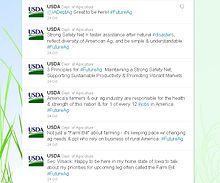Activity Streams, a digital log of an individual’s actions on a specific website, was first introduced by Facebook[1] via their News Feed feature in 2006. The principal aim of an Activity Stream is to enhance interaction among websites, an objective pursued by initiatives like the Activity Streams project. Major platforms such as Facebook and MySpace have now allowed developers to access their Activity Streams, broadening its application beyond just social networking to become a vital tool in business software for internal communication. Activity Streams can be categorized into two main types: generic feeds that present identical content to all users, and personalized feeds that customize content and rankings for each unique user. This feature has been incorporated into numerous business software, such as enterprise social software like Jive Software, Yammer, and Chatter, as well as collaboration software providers like tibbr, Central Desktop, and Wrike. Noteworthy implementations are evident in products from Oracle, Salesforce, and Traction TeamPage. Activity Streams are also prevalent on platforms like LinkedIn, micro.blog[2], and Identi.ca, and were once featured on now-defunct platforms like MySpace, Diaspora, and Orkut.
An activity stream is a list of recent activities performed by an individual, typically on a single website. For example, Facebook's News Feed is an activity stream. Since the introduction of the News Feed on September 6, 2006, other major websites have introduced similar implementations for their own users. Since the proliferation of activity streams on websites, there have been calls to standardize the format so that websites could interact with a stream provided by another website. The Activity Streams project, for example, is an effort to develop an activity stream protocol to syndicate activities across social web applications. Several major websites with activity stream implementations have already opened up their activity streams to developers to use, including Facebook and MySpace.

Though activity stream arises from social networking, nowadays it has become an essential part of business software. Enterprise social software is used in different types of companies to organize their internal communication and acts as an addition to traditional corporate intranet. Collaboration software like Jive Software, Yammer, and Chatter offer activity stream as a separate product. At the same time other software providers such as tibbr, Central Desktop, and Wrike offer activity stream as an integrated part of their collaboration software solution.
Activity streams come in two different variations:
